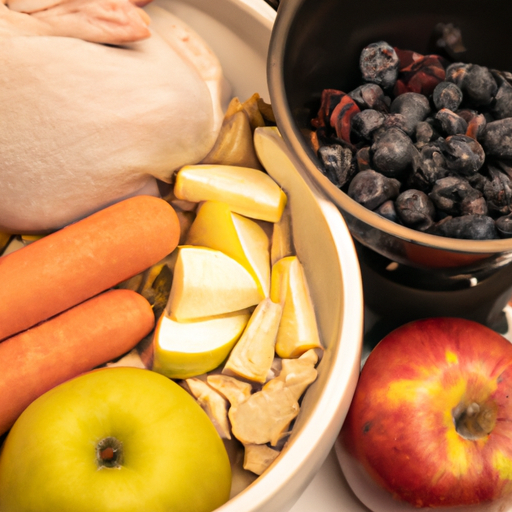As a caregiver to a four-legged friend, it’s crucial to understand their nutritional needs. This piece will guide you through the world of raw foods, helping you provide the best diet for your canine companion.
H2: The Concept of a Raw Diet for Dogs
Proponents of a raw diet for dogs, often referred to as BARF (Biologically Appropriate Raw Food), believe it mimics the diet of their wild ancestors and promotes optimal health. This diet consists primarily of raw meat, bones, fruits, and vegetables.
- Benefits: Potential benefits include shinier coats, healthier skin, cleaner teeth, increased energy levels, and smaller stools.
- Risks: However, it’s important to note that raw diets also pose risks, such as potential for bacterial infections, an unbalanced diet leading to nutritional deficiencies or excesses, and potential for whole bones to choke an animal, break teeth or cause an internal puncture.
H2: Suitable Raw Foods for Dogs
Several raw food items are not just safe for dogs, but they can also be quite beneficial for their health:
- Raw Meat: This is the main component of a raw food diet. Meat should always make up over half of the diet. Chicken, beef, lamb, and turkey are all good choices.
- Raw Bones: Raw bones can be both a great source of calcium and a fun chew toy. Always supervise your dog when they are gnawing on bones to prevent any choking hazard.
- Fruits and Vegetables: Some vegetables and fruits can be a valuable part of a dog’s diet. They provide essential vitamins, minerals, and fiber.
Here’s a quick table showing some recommended fruits and vegetables:
| Fruits | Vegetables |
|---|---|
| Apples | Carrots |
| Bananas | Green beans |
| Pears | Broccoli |
| Pineapple | Spinach |
H2: Foods to Avoid
While it’s important to know what raw foods dogs can eat, it’s equally crucial to be aware of the ones they should avoid. Some foods can be toxic to dogs, including:
- Grapes and raisins
- Onions and garlic
- Avocados
- Chocolate
- Alcohol
H2: Transitioning Your Dog to a Raw Diet
Transitioning your dog to a raw food diet should be a gradual process. Start by introducing small amounts of raw food to their regular diet. Gradually increase the amount of raw food while decreasing the amount of their current diet.
Remember, every dog is unique. Monitor your dog’s behavior, energy levels, and stool consistency throughout the transition and make adjustments as necessary.
Frequently Asked Questions (FAQs)
Q: Can I mix raw food with cooked food?
A: Yes, but it’s best to do so gradually to prevent digestive issues.
Q: How much raw food should I feed my dog?
A: Generally, an adult dog should eat 2-3% of their body weight daily, but this can vary depending on age, breed, and lifestyle.
Q: Can puppies eat a raw food diet?
A: Yes, but they require a balanced diet for their growth and development. Consult with a vet to ensure they’re getting all necessary nutrients.
Remember, always consult with a veterinarian before making any major changes to your dog’s diet. With their guidance and this knowledge, you’ll keep your dog happy, healthy, and full of tail-wagging energy.



